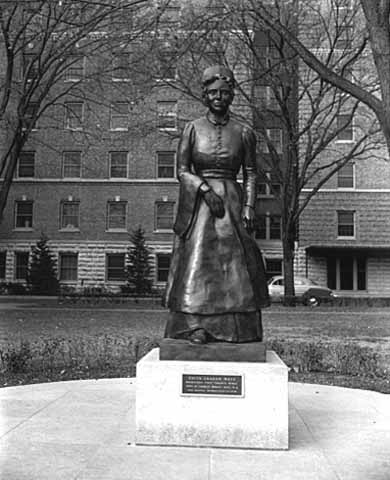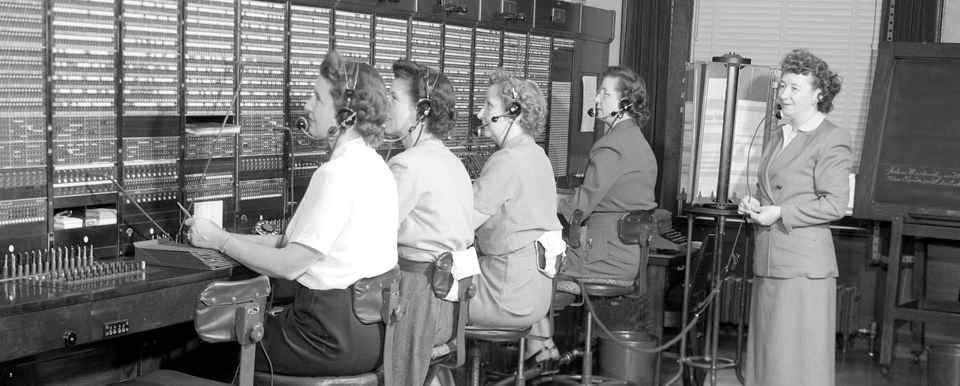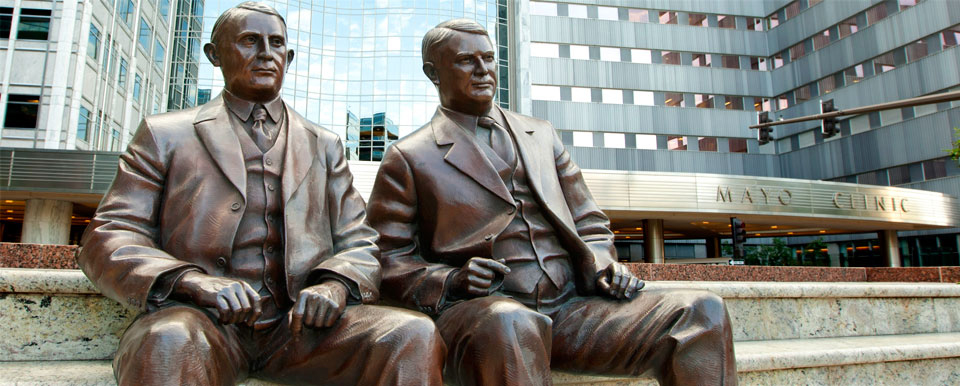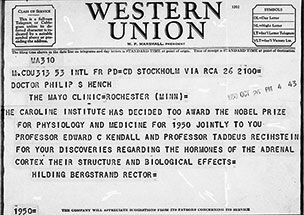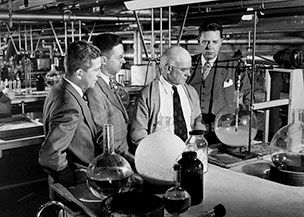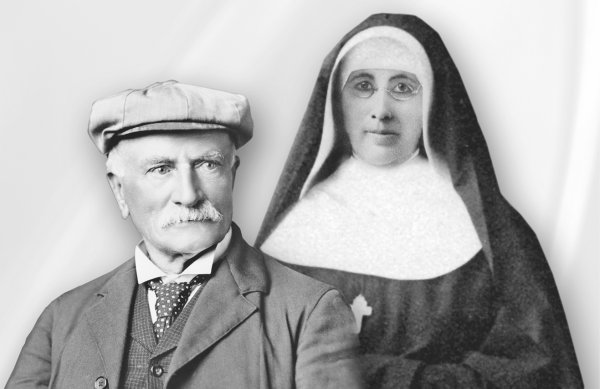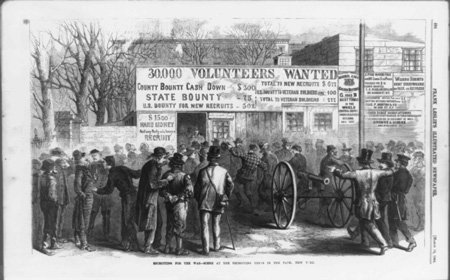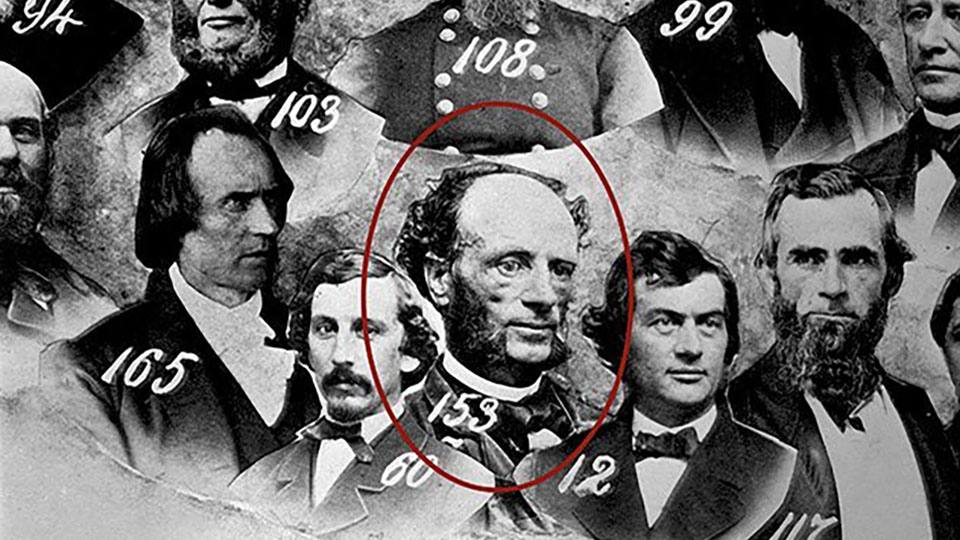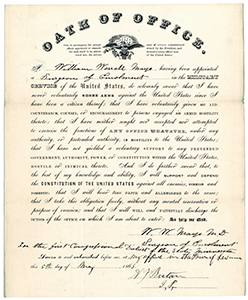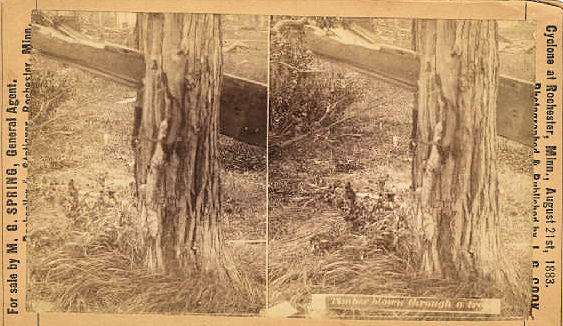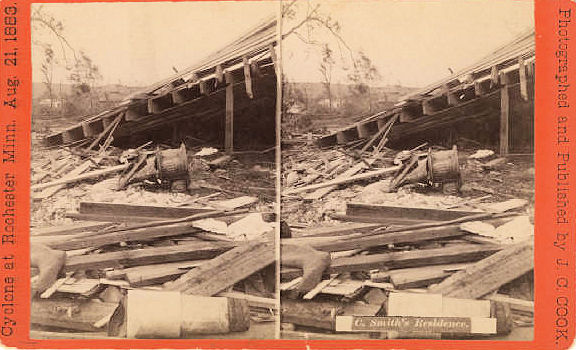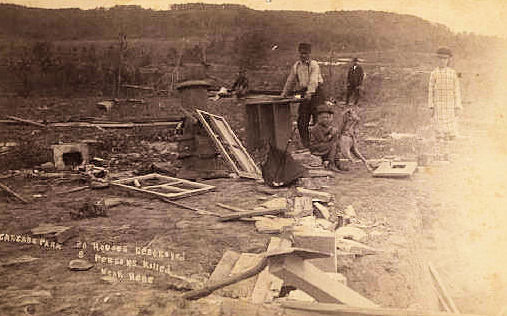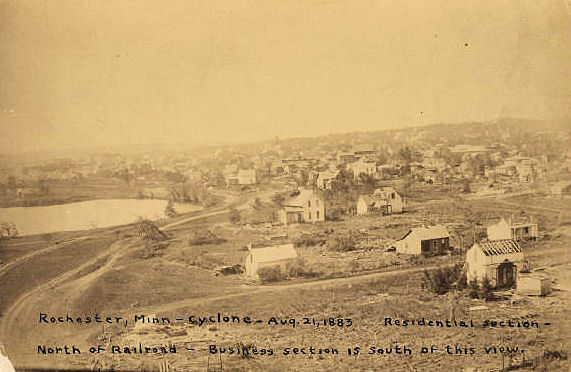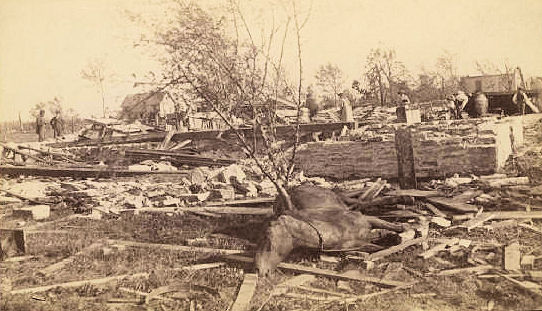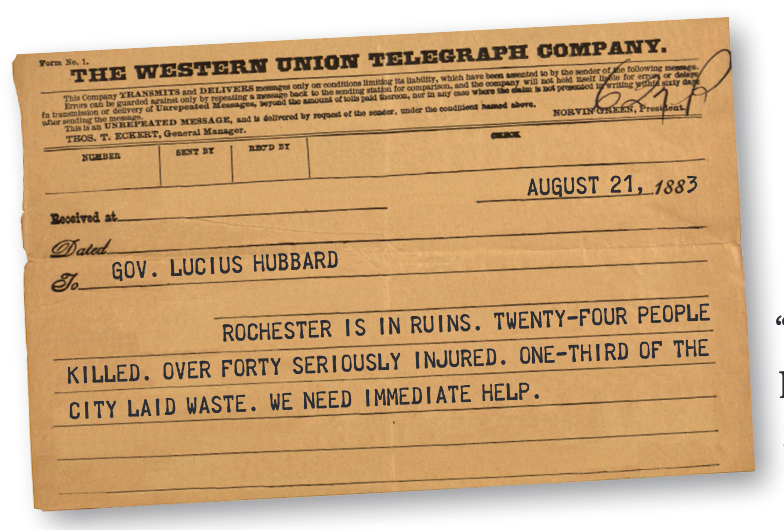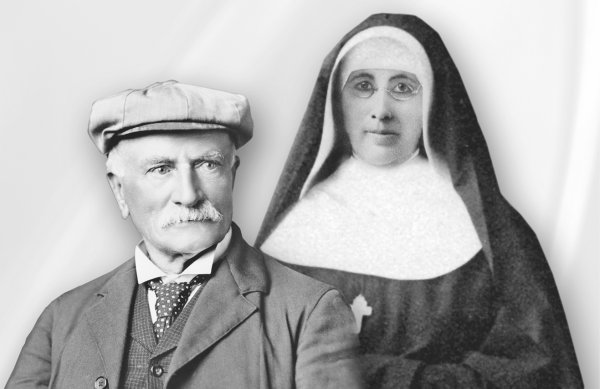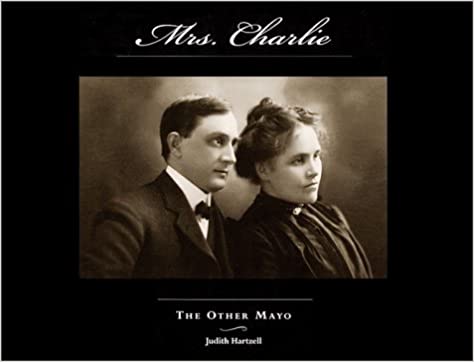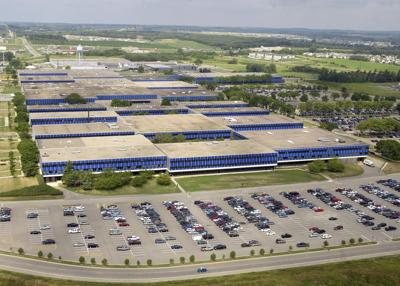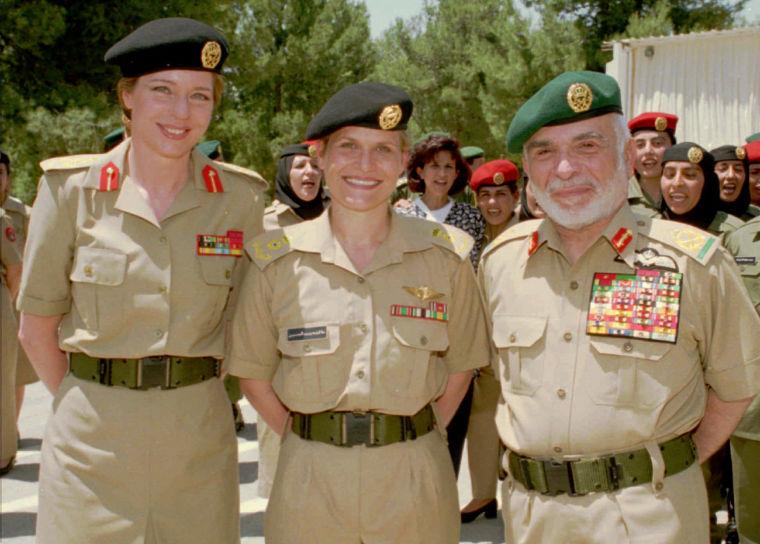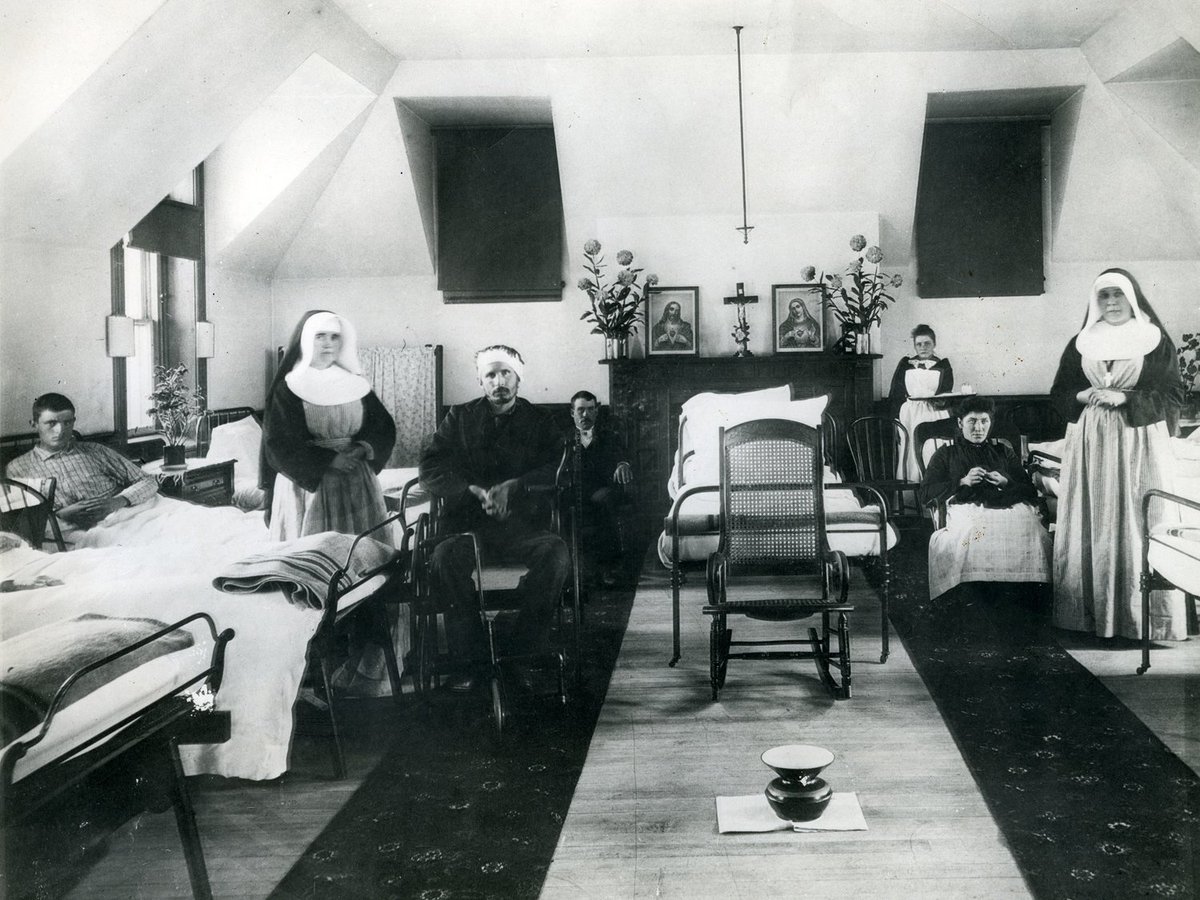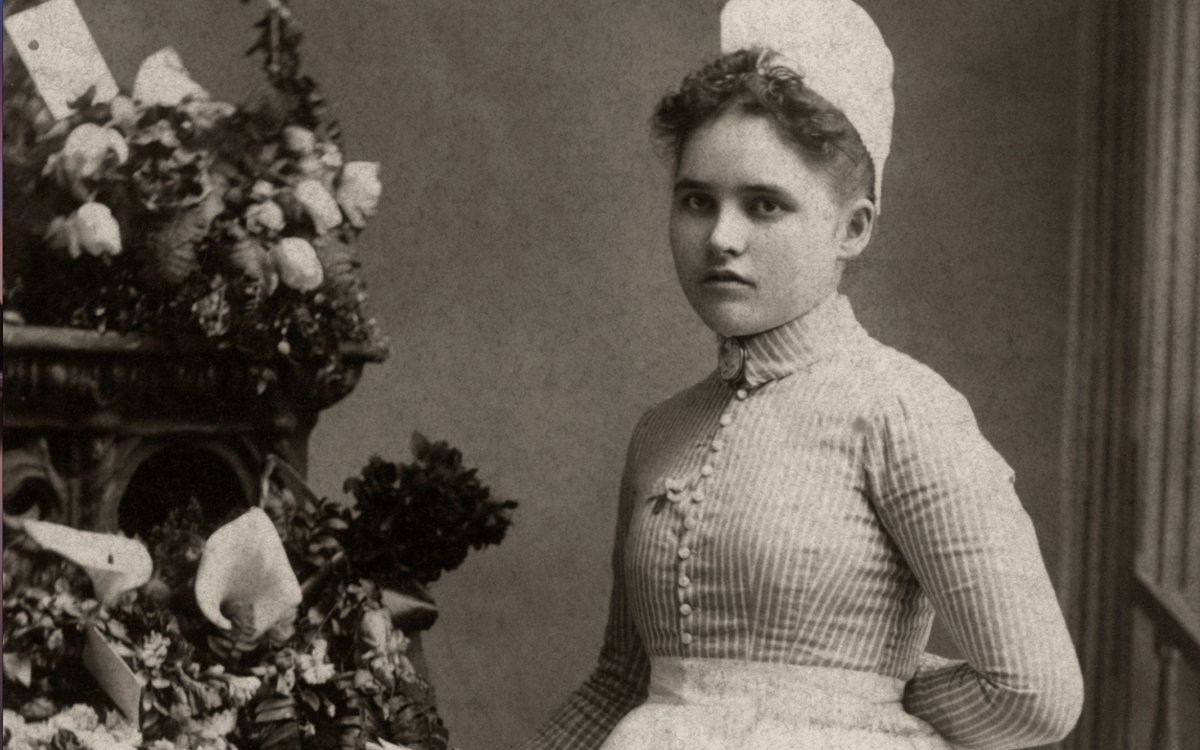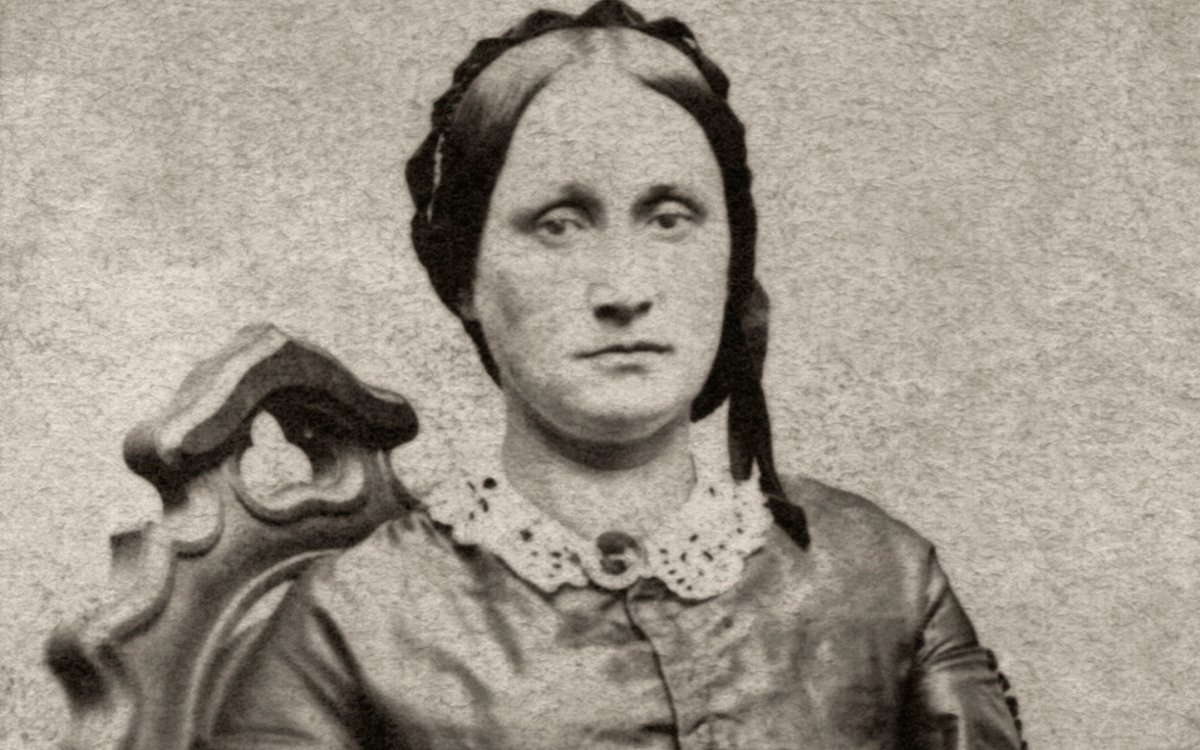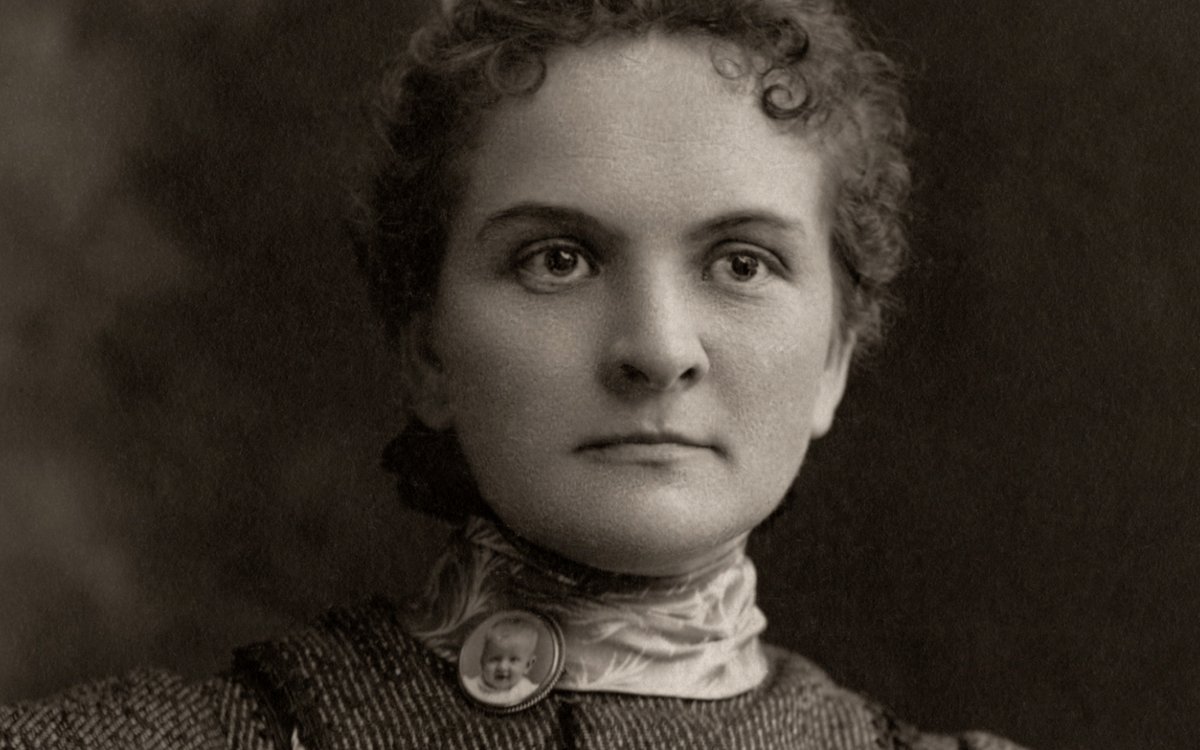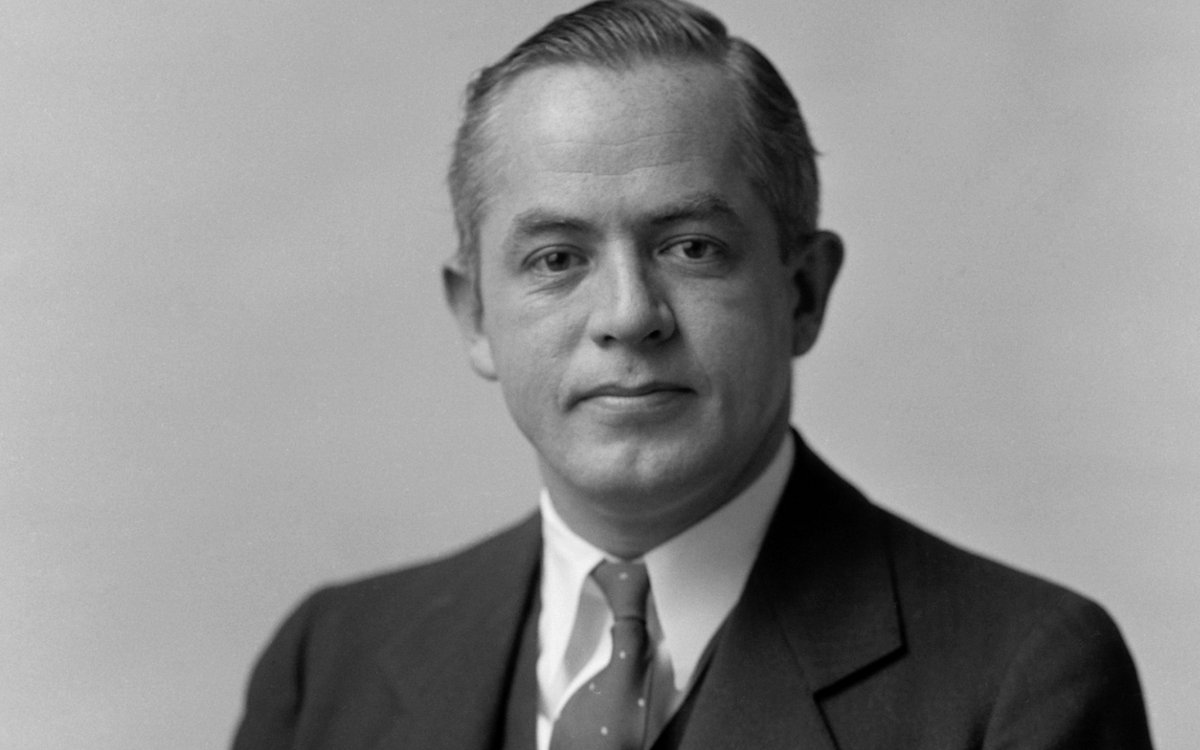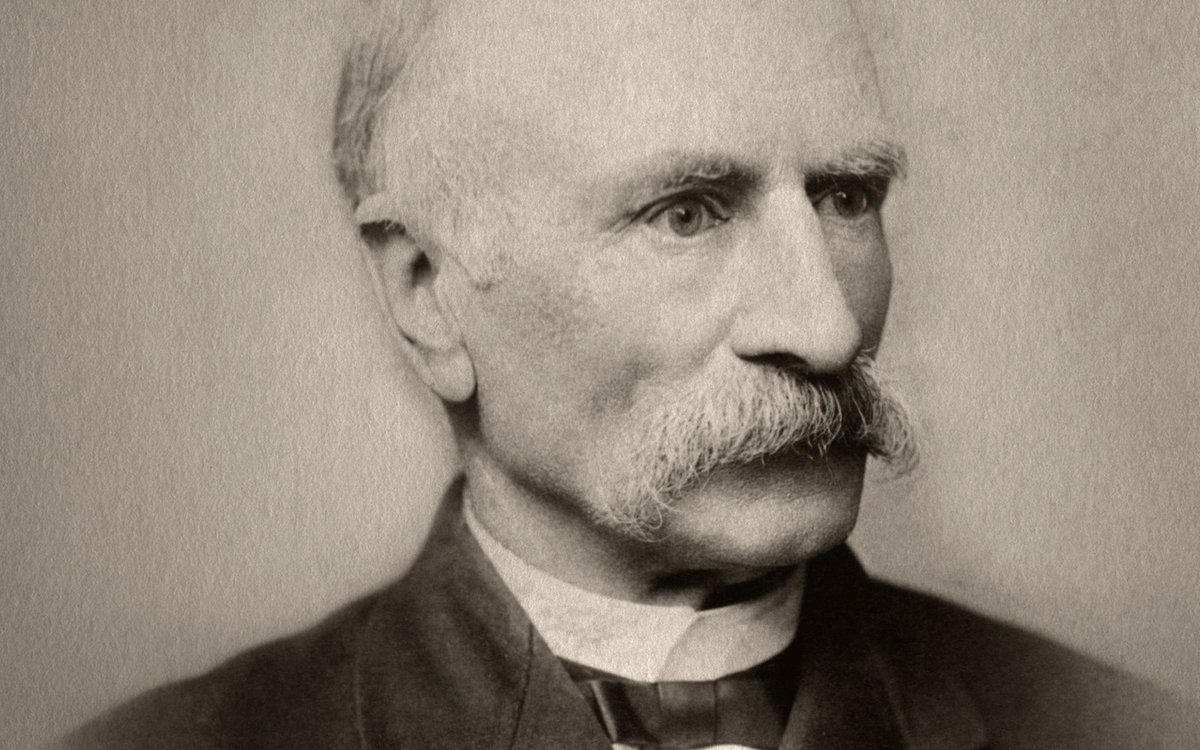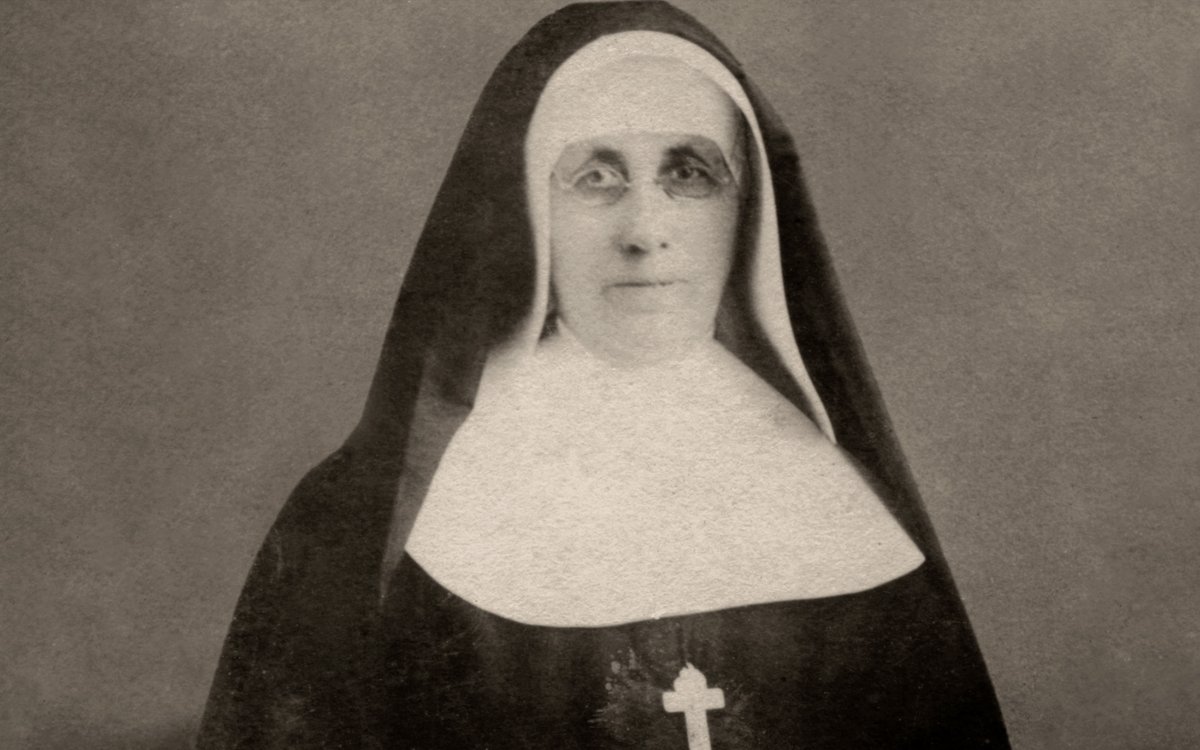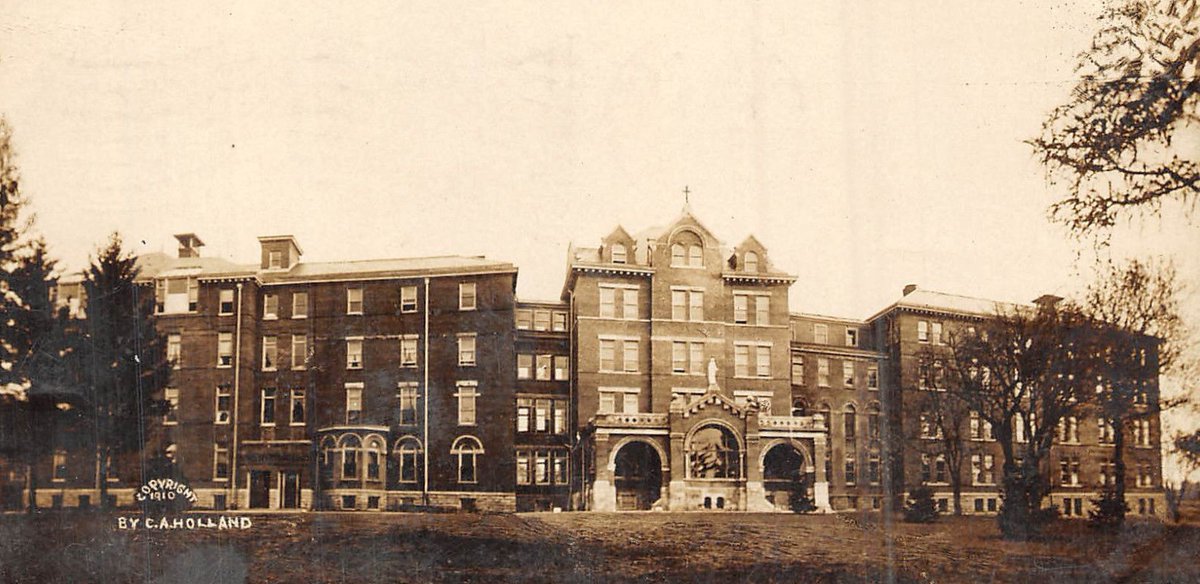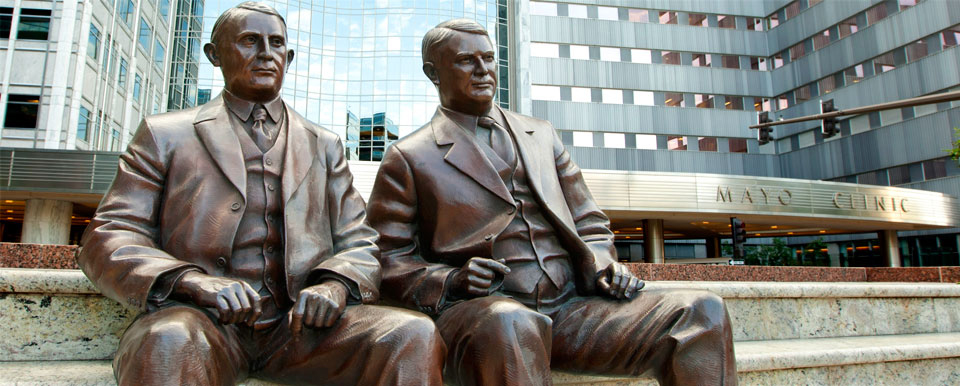1. "Mrs. Charlie," the other Mayo, is largely responsible for the Mayo Clinic becoming what it is today. <THREAD>
2. How did the world famous Mayo Clinic come to exist? It's because of the U.S. Civil War and an F5 tornado - a tornado likely similar to the one that destroyed Joplin, Missouri, in 2011.
(Mayo Clinic switchboard circa 1950)
(Mayo Clinic switchboard circa 1950)
3. First things first - the official history is at http://history.mayoclinic.org/
"My Brother and I" bronze figures in front of Mayo Clinic, Rochester, Minnesota
"My Brother and I" bronze figures in front of Mayo Clinic, Rochester, Minnesota
4. Imagine receiving the telegram - in 1950 - that two of your people are being awarded the Nobel Prize. Edward Kendall, Ph.D., and Philip Hench, M.D., shared the Nobel prize.
5. "In the spirit of teamwork, the Nobel Prize was announced at a meeting of the medical and scientific staff so all participants would know they were included and recognized in the award. As Dr. Kendall said, 'This could have only happened at the Mayo Clinic.'"
6. Edward Kendall, Ph.D., third from right, and Phillip Hench, M.D., far right, shared the Nobel Prize for discovering cortisone. They, along with Tadeus Reichstein, were each awarded 1/3 of the prize.
http://history.mayoclinic.org/historic-highlights/nobel-prize-telegram.php
http://history.mayoclinic.org/historic-highlights/nobel-prize-telegram.php
7. So what's the story that led to the world-class Mayo Clinic?
(Dr. William Worrall Mayo and Mother Alfred Moes)
(Dr. William Worrall Mayo and Mother Alfred Moes)
8. Congress passed its first-ever wartime draft in early March of 1863 covering all males age 20-45.
9. Physicians were needed, to determine which men were fit for military duty. Men with missing front teeth had to be rejected. That's because teeth were used to tear open paper cartridge for arming and firing a musket.
10. Wartime draft candidates would sometimes injure themselves so as to avoid being drafted. These techniques, such as shooting yourself in the foot, remained common into the 20th Century. Let's get back to the Mayo Clinic.
11. "Dr. W. W. Mayo (circled) served as a Union Army examining surgeon during the Civil War." Mayo Clinic Laboratories explains... https://news.mayocliniclabs.com/2017/12/28/call-service-civil-war-throwbackthursday/
12. "In 1863, shortly before the climactic Battle of Gettysburg, President Abraham Lincoln appointed Dr. W. W. Mayo as an examining surgeon for the Union Army in the First Minnesota District, which encompassed the southern half of the state."
13. "The Enrollment Board had its headquarters in Rochester, a thriving agricultural community with good railroad connections. Dr. Mayo's military service would be short-lived, but Rochester became an ideal..."
14. "location for the medical practice that he established and passed on to his sons."
15. Dr. Mayo's assignment with the Enrollment Board brought him to Minnesota. His family joined him early the next year.
16. The tornado hit 20 years later on August 21, 1883. It's estimated to have been an F5, likely similar to what destroyed Joplin, Missouri, in 2011. These photos are from the National Weather Service courtesy of Olmsted County Historical Society (which includes Rochester).
18. The destroyed C. Smith's residence is shown with the roof on the ground. In front of the collapsed building in a pile of rubble is a boot and a stove.
19. Several people are viewing the damage from the tornado. A man is standing next to a piece of furniture and a boy is sitting with a large toy horse. Among the debris on the ground is a stove, windows and an umbrella. The...
21. The destructive force of this tornado is evident in this scene of destroyed homes in the residential section of North Rochester. About one third of the city was completely destroyed and the remainder was heavily damaged.
22. North Rochester, or Lower Town was the hardest hit. This section of the city was largely inhabited by working people. People are looking through piles of rubble. A dead horse is in the foreground, possibly impaled by a tree or branch.
23. The collection of 32 photos is here https://www.weather.gov/arx/aug211883photos
24. In many ways this disaster caused the birth of modern medicine as we know it today. https://www.postbulletin.com/news/local/history-of-mayo-clinic/article_2bfe26ec-37e3-5b30-ad2d-a9e4b0f80534.html
25. So many were injured from the tornado that the Mayos asked the local Franciscan sisters to serve as nurses.
26. Mother Alfred Moes, founder of the Sisters of St. Francis, proposed building and staffing a hospital if Dr. W. W. Mayo would provide medical care. This was in 1883-1884, a few months after the tornado.
27. Dr. Mayo's two sons, William J. and Charles H., in 1883 and 1888 join Mayo's practice after they finish medical school. Most accounts have William already in practice and helping with 1883 tornado disaster recovery.
28. This is why the histories are careful about all the initials in the names of the Doctors Mayo. There were three of them, two of them named William and all of them named Mayo.
29. "Mrs. Charlie", Edith Graham Mayo, was in fact "the other Mayo". She was St. Mary's Hospital's first trained nurse, anesthetist and nurse educator.
30. "Her abilities as a nurse, anesthetist, and educator helped reduce hospital mortality in an era where poor anesthesia care was blamed for many deaths." https://sharing.mayoclinic.org/2014/12/01/celebrating-nurse-anesthetist-education-edith-graham-mayo/
31. This in turn changed the public's perception of the hospital as a place to die, to a place to be healed. "We can confidently say the Mayo Clinic's success was in part due to the success of its first anesthetist."
32. The Mayo Clinic's official history proclaims, "The Doctors Mayo and the Sisters of St. Francis created a unique model of teamwork in service to patients, which continues today."
33. That, in the Mayo Clinic's own opinion, is why the Mayo Clinic is what it is. In many ways modern medicine WAS created just down the road from me, in Rochester Minnesota.
34. To the best of my knowledge, that claim is legit. The Doctors Mayo and the staff of Mayo Clinic and the associated St Mary's Hospital were groundbreaking in collaborative processes.
35. It wasn't merely a matter of having the best doctors. It was their approach to teamwork and collaboration in patient care.
36. During a Clinic tour years ago, the guide told us that no doctor ever applies to practice at the Mayo Clinic. They don't take applications. The clinic asks YOU to come join THEM, and not the other way around.
37. Rochester, Minnesota, consistently remains on the list of best places to live in the USA. That's in spite of it embracing the Minnesota winter six months of every year. (Six months of winter followed by six months of winter's coming.)
38. The reason, our tour guide explained, is that Mayo Clinic wants Rochester to be a place that world-class doctors will want to call home. Makes sense - and the Minnesota winters do make that approach necessary.
40. Their Rochester, Minnesota, facility remains their largest in the world under one roof, multiple buildings adding up to 78 football fields of space, producing over 2,700 patents. https://www.ibm.com/ibm/history/exhibits/rochester/rochester_profile.html
41. I see their profile page features the IBM Blue Gene supercomputer. I got to work on that project, driving down to Rochester daily and becoming addicted to John Hardy's BBQ.
42. So, back to the Mayo Clinic. U.S. Highway 52 runs from the Canadian Border in North Dakota to the Atlantic Ocean at Charleston, South Carolina. Along here, though, is where we see the silently screaming ambulances.
https://en.wikipedia.org/wiki/U.S._Route_52
https://en.wikipedia.org/wiki/U.S._Route_52
43. The ambulances are running with lights flashing but no siren. They are simply making the run between hospitals in the Twin Cities and Mayo Clinic.
44. Countless heads of states have made that run, though usually in more dignified fashion. Rochester remembers the King of Jordan particularly fondly. https://www.postbulletin.com/news/local/jordanian-king-touched-many-in-rochester/article_4e28a40e-af55-5703-8a5d-fc6f0f71d70b.html
45. Jordan's King Hussein, right, poses for a picture along with his American-born wife, Queen Noor, left, and his daughter, Princess Aisha. "Major General Her Royal Highness Princess Aisha bint Al Hussein of Jordan appeared at Mayo Civic Center..."
46. in Rochester on Friday night to thank Mayo Clinic staff for the care they provided her father, King Hussein, before his death. She said he loved to go to Mayo Eugenia Litta Children's Hospital and read to pediatric patients from their storybooks."
47. "Her father is remembered for his generosity in Rochester, even though he died at 63 of non-Hodgkin lymphoma 15 years ago."
48. "He also made news when he paid a visit to the ailing president of the United Arab Emirates in 1996--the first time two leaders from the Middle East had met in Rochester."
49. "In 1997 King Hussein, who was at Mayo Clinic in Rochester... also met with Israeli Prime Minister Benjamin Netanyahu when Netanyahu was in the United States for talks with President Bill Clinton."
50. The New York Times wrote in 1999, "King Hussein of Jordan leaves Mayo Clinic in Rochester, Minn, to go home to die." (Seems kinda direct to me!) https://www.nytimes.com/1999/02/05/world/jordanian-ruler-treatment-failed-goes-home-to-die.html
51. I shared this story because, April 2020, Rochester's Post Bulletin reports that "Mayo says it has capacity to deliver testing needed to reopen the economy"
https://www.postbulletin.com/life/health/mayo-says-it-has-capacity-to-deliver-testing-needed-to-reopen-the-economy/article_108e688e-7eaa-11ea-8a5d-33b38e022854.html
https://www.postbulletin.com/life/health/mayo-says-it-has-capacity-to-deliver-testing-needed-to-reopen-the-economy/article_108e688e-7eaa-11ea-8a5d-33b38e022854.html
52. For that we can thank the legacy of the Doctors Mayo; the Sisters of Saint Francis and Mother Alfred Moes; and Mrs. Charlie, the other Mayo - brought here by the Civil War and brought together by the tornado that destroyed Rochester.
53. As you see The Mayo Clinic in the news this summer, you'll know there's a story behind that story. Mother Alfred Moes inspired Rochester to build the hospital and Doctor Mayo to run it.
54. "Without the determination and vision of Mother Alfred Moes, the founder of the congregation, there would be no Mayo Clinic." https://www.medcitybeat.com/news-blog/2018/legacy-of-mother-alfred-moes-continues-to-guide-rochester-franciscan-sisters
55. Mrs. Charlie changed peoples' thinking about a hospital. Rather than being a place to go and die, people began to think of the hospital as a place to get well. She taught the sisters how to care for patients.
56. Louise Abigail Wright (1825-1915) married the elder Doctor Mayo. "Louise assisted him at surgeries, treated injuries, and counseled patients who showed up when her husband was away. She also taught her sons Will and Charlie botany and..."
57. "showed them how to formulate herbal medicines." https://www.pbs.org/kenburns/the-mayo-clinic/stories-from-the-mayo-clinic
58. Dr. Will's wife Hattie (1859-1901) "had grown up with the Mayo brothers in Rochester. She was considered rather shy, artistic, formal and stayed out of clinic affairs, but designed both of their houses and served as a hostess to doctors from all over the world."
59. We know about Dr. William Worrall (1819-1911) and Louise. We know of Dr Will (1861-1939) and Hattie. We know Dr. Charlie (1865-1939) and Edith (1867-1943). Here's Dr. Chuck (1898-1968), the son of Edith Graham and Charlie Mayo.
60. "Dr. Chuck joined the Clinic in 1928. Ironically, during Dr. Chuck's first surgery as Charlie's assistant, his father had a mini-stroke and never operated again. In addition to being an acclaimed surgeon, he was instrumental..."
61. "in establishing a 'Mayo Unit' in the Phillippines during World War II, and served as a key administrator at Mayo for his entire career."
62. "The patriarch of the Mayo family, W.W. Mayo emigrated to America from England in 1846. After medical school, he eventually settled in Rochester and opened a small practice that would would day become what many believe is the greatest medical center in the world."
63. "In 1877, Mother Alfred Moes moved to Rochester and built a convent school called the Academy of Our Lady of Lourdes. After helping the Mayos care for the injured in the aftermath of the devastating tornado of 1883, ..."
64. "she had a vision of building a hospital that would become 'world renowned for its medical arts.' St. Mary's Hospital opened six years later." The hospital now has 1,265-beds and 70 operating rooms. It is one of two Mayo Clinic hospitals in Rochester.
65. What is it that sets Mayo Clinic apart? I suspect it is what Mayo calls the "Mayo Clinic Model of Care" http://history.mayoclinic.org/toolkit/mayo-clinic-model-of-care.php

 Read on Twitter
Read on Twitter